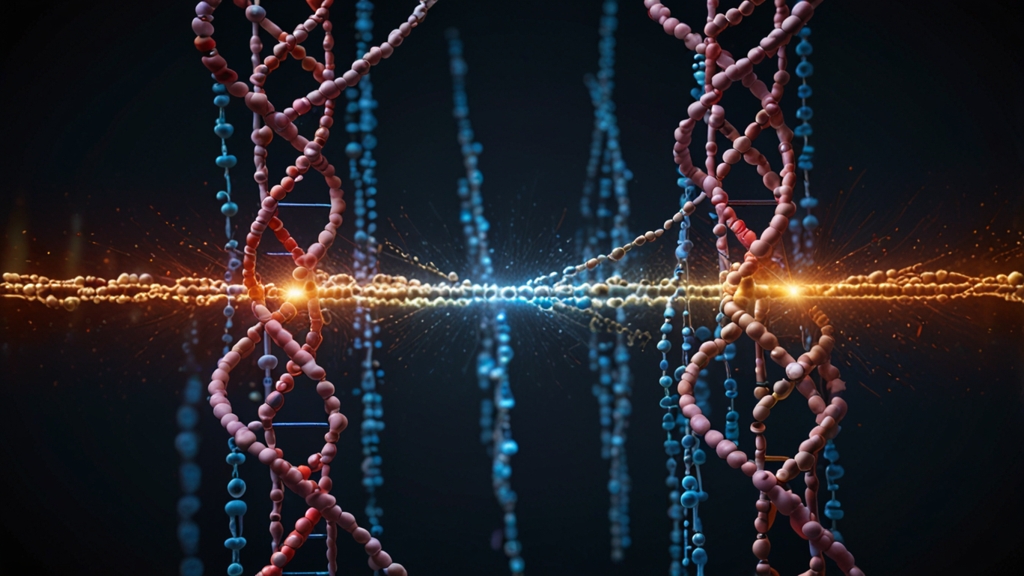From Rags to Riches: The Biology of Regeneration in Nature
The natural world is a treasure trove of phenomena that continue to baffle and inspire scientists and laymen alike. One of the most captivating abilities across various species is the power of regeneration. This extraordinary capacity allows organisms to regrow lost or damaged tissues, organs, or even entire limbs. From the microscopic world of single-celled organisms to the complex structure of vertebrates, regeneration exemplifies nature's resilience and ingenuity.
The Cellular Basis of Regeneration
Regeneration begins at the cellular level, involving a series of intricate biological processes. At the heart of these processes are stem cells, which have the remarkable ability to differentiate into various cell types. When an organism experiences injury or tissue loss, stem cells are activated to proliferate and replace the lost or damaged cells.
Additionally, certain proteins and signaling pathways play a pivotal role in guiding these stem cells. For example, the Wnt signaling pathway and the Hedgehog signaling pathway are essential in regulating the direction and extent of tissue growth. Understanding these pathways is crucial for appreciating how regeneration works and how it can potentially be harnessed for medical purposes.
Regenerative Powerhouses in the Animal Kingdom
Several animals stand out for their almost magical regenerative abilities. The axolotl, a type of salamander, can regenerate entire limbs, spinal cord segments, heart tissue, and even part of its brain. Similarly, planarian flatworms can regenerate a whole new body from just a fragment of their tissue. This has earned them the nickname "immortal worms."
"The ability of these organisms to regenerate is not just a function of replacing lost parts, but also of re-establishing functional integration. For instance, a new limb in axolotls is not just a bunch of cells and tissues; it has nerves, blood vessels, muscles, and bones that work perfectly in coordination with the rest of the body," says Dr. Aisha Karim, a leading researcher in regenerative biology.
Regeneration in Humans
Humans too have regenerative capabilities, but they are more limited compared to some of their simpler counterparts. The liver is the most notable organ in humans that can regenerate to a significant degree. For instance, up to 75% of a liver can be regenerated after surgical removal. The skin also has a remarkable ability to heal and recover from wounds.
Recent advances in stem cell research and tissue engineering have propelled the field of regenerative medicine. Scientists are optimistic about developing therapies that could one day enable humans to regenerate tissues and organs more extensively, thereby offering treatments for conditions that currently have no cure. These potential therapies include stem cell transplants and bioengineered tissues and organs.
"If we could harness the same regenerative powers as some of these incredible organisms, the implications for medicine would be revolutionary. Conditions ranging from spinal cord injuries to heart disease could be mitigated or even cured," notes Dr. Robert Langley, a pioneer in regenerative medicine.
The Future of Regenerative Medicine
The future is promising, but it also comes with challenges. One of the main hurdles is understanding the complex signaling networks that regulate regeneration. Researchers are currently focusing on deciphering these signals to develop more effective regenerative therapies. Another critical aspect is ensuring that newly generated tissues integrate seamlessly with existing tissues, functioning optimally without causing adverse effects such as cancer.
Additionally, ethical concerns around the use of stem cells, particularly embryonic stem cells, need to be thoughtfully addressed. The field navigates the fine line between scientific advancement and ethical responsibility, striving to find a balance that allows for both progress and respect for life.
Conclusion
From the tiny planarian flatworm to the adaptable axolotl, the study of regeneration in nature provides invaluable insights that could transform medicine. As we continue to unravel the mysteries of these processes, the dream of harnessing regenerative capabilities to improve human health becomes increasingly tangible. The journey from rags to riches in the realm of regenerative biology is filled with challenges, but the potential rewards make it a quest worth pursuing.
"Understanding and emulating nature's regenerative processes could very well be the cornerstone of medical breakthroughs in the 21st century," concludes Dr. Aisha Karim.








